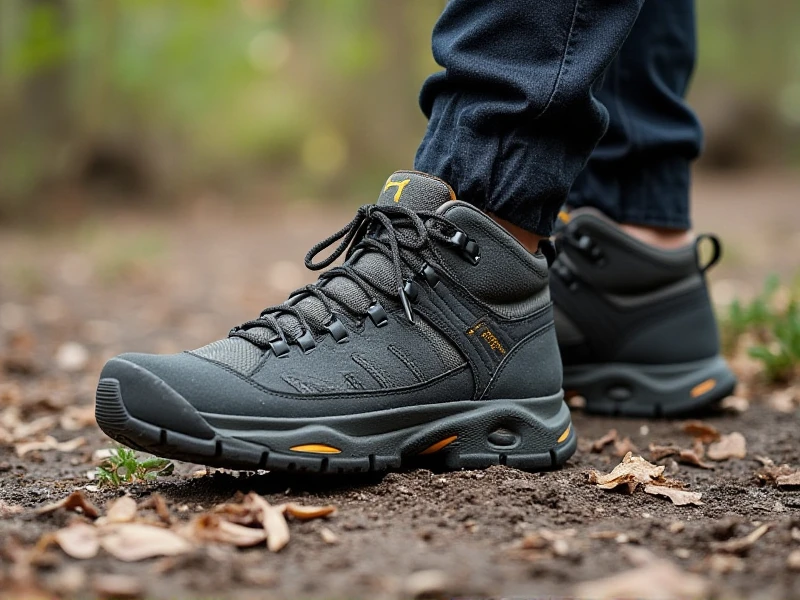Choosing Your Perfect Pair: The Ultimate Guide to Men's Hiking Shoes
2025-06-10

Okay, here is an SEO-optimized article targeting "Men's hiking shoes," designed sound natural and helpful, hitting around 600 words:
Hitting the trails isn't just about the destination; it's about enjoying every step of the journey. For men, this absolutely starts with what's on your feet. Ditch the old sneakers or uncomfortable boots; investing in the right pair of men's hiking shoes is crucial for comfort, safety, and peak performance on any terrain. But with so many options screaming for your attention, how do you pick the champions?
Why Specialized Footwear Matters
Think of your men's hiking shoes as your connection to the trail. Regular shoes lack the specific features needed to handle uneven paths, slippery rocks, muddy patches, or steep inclines. Quality hiking shoes provide:
1. Essential Traction: Aggressive lug patterns on the outsole grip loose dirt, mud, wet leaves, and smooth rock far better than street shoes. This translates to stability and confidence with every step, reducing slips and falls.
2. Trusted Support & Stability: Designed to cradle your foot and ankle, mens hiking shoes often feature supportive midsoles and structured uppers. This reduces fatigue on long hikes and minimizes the risk of ankle rolls, especially with moderate packs. Even lighter trail shoes offer more stability than city footwear.
3. Dependable Protection: Toe caps shield against stubs on roots and rocks. Stiffer midsoles protect your feet from sharp objects underfoot. Sturdy uppers guard against trail debris. Some models offer integrated rock plates for extra protection on technical trails.
4. Weather & Water Management: While not all are fully waterproof, many men's hiking shoes use breathable, quick-drying materials to manage sweat. Waterproof membranes (like GORE-TEX) are common for wet climates or dewy mornings, keeping your feet dry from external moisture while usually maintaining breathability. Non-waterproof mesh shoes excel in hot, dry conditions for maximum ventilation.
Finding Your Ideal Men's Hiking Shoe Match
Not all trails are equal! Consider these factors:
The Terrain & Distance:
Well-maintained paths, day hikes: Look for lighter men's hiking shoes or agile trail runners. Flexibility and comfort rule here. (Keywords: Lightweight hiking shoes men, Men's trail running shoes hiking)
Rocky, uneven, or moderate backpacking: Opt for mid-cut men's hiking shoes or higher for enhanced ankle support and stability under load. Slightly stiffer midsoles offer better protection and stability on uneven ground. (Keywords: Men's mid hiking shoes, Supportive hiking boots men)
Technical trails, heavy packs: Consider sturdy hiking boots. They provide maximum ankle support, protection, and durability for challenging conditions and significant weight.
The Fit is KING: Ill-fitting shoes are a recipe for blisters and misery. Always try on men's hiking shoes in the afternoon when feet naturally swell. Wear the hiking socks you intend to use. There should be ample width (no pinching), especially in the toe box. Expect about a thumb's width of space between your longest toe and the shoe end. Ensure your heel is firmly locked down, minimizing slippage. Visit a reputable outdoor store for professional fitting if possible.
Material Considerations:
Leather: Durable, naturally more weather-resistant, can be heavier. Often requires a break-in period. Great for durability.
Synthetics (Nylon, Polyester, Mesh): Lighter weight, generally more breathable, dry quicker, often more budget-friendly. Mesh excels in breathability; overlays add structure.
Ankle Height & Cut:
Low-cut (Shoes): Most popular, lighter, maximum flexibility and mobility. Excellent for well-maintained trails and speed. Less ankle support.
Mid-cut: Ankle collar provides some support, protects against scrapes and debris. A versatile choice for varied terrain and light backpacking. Balances mobility and support. (Keywords: Men's ankle support hiking shoes)
High-cut (Boots): Maximum ankle support and protection for rugged trails, off-trail ventures, or carrying heavy packs. Heavier and less flexible.
Waterproof or Breathable? Seriously consider your climate and typical hiking conditions:
Waterproof (GORE-TEX or similar): Essential for wet grass, mud, rain, puddles, snow. Traps less heat than non-breathable waterproofing.
Non-Waterproof (Mesh-heavy): Ideal for guaranteed dry, hot conditions or fast hiking where sweat management is priority. Water drains quickly if submerged, dries fast.
Top Brands Trusted for Men's Hiking Shoes
The outdoor industry offers fantastic choices. Renowned brands like Salomon, Merrell, Keen, La Sportiva, Adidas Terrex, Hoka, and Columbia Sportswear consistently produce high-quality men's hiking shoes catering to different terrains, weights, budgets, and fits. Explore specific models within brands; one brand rarely fits everyone perfectly!
Maintenance = Longevity
Preserve your investment! Clean your men's hiking shoes after hikes – brush off dirt, remove insoles to air out. Let them dry naturally, away from direct heat. Regularly treating leather (if applicable) preserves suppleness. Waterproofing sprays can help maintain DWR (Durable Water Repellent) finishes on synthetic boots and shoes. Rotate shoes if hiking frequently.
Step Out with Confidence
Choosing the right pair of men's hiking shoes isn't just gear acquisition; it's unlocking miles of adventure and discovering landscapes in greater comfort and safety. Identify your typical terrain, prioritize a great fit, select the features that match your climate, and step onto the trail ready for whatever path unfolds. Your feet, your knees, and your entire hiking experience will thank you. Happy trails from the ground up!
Category: